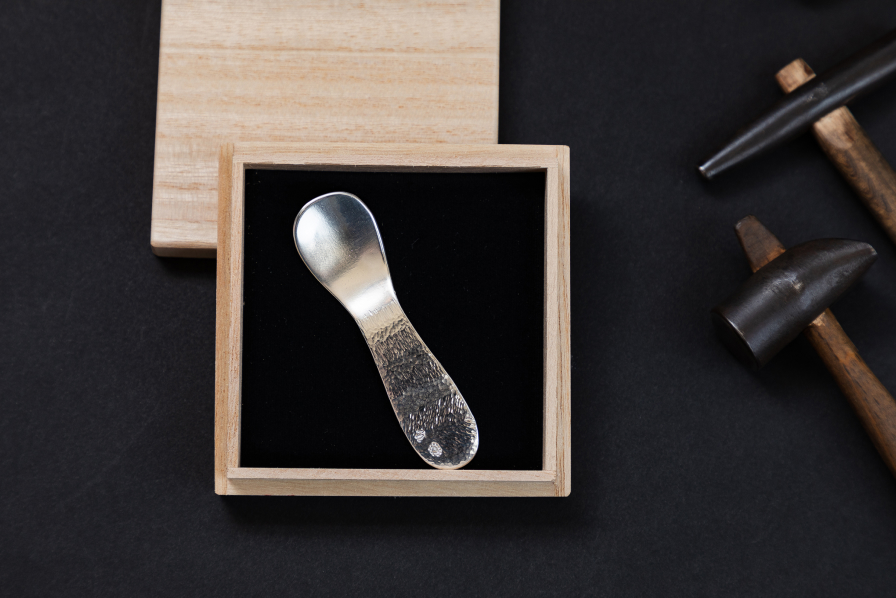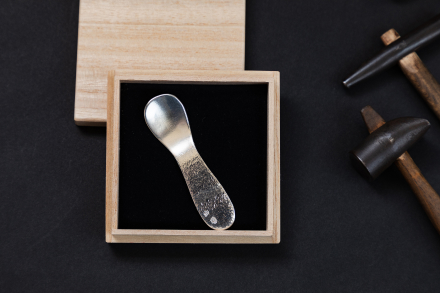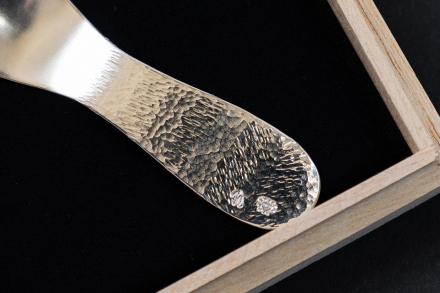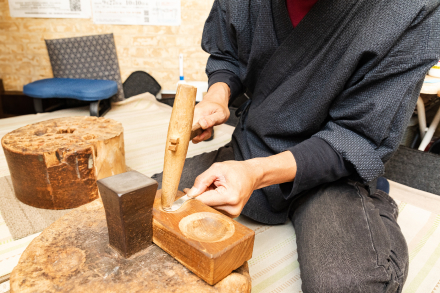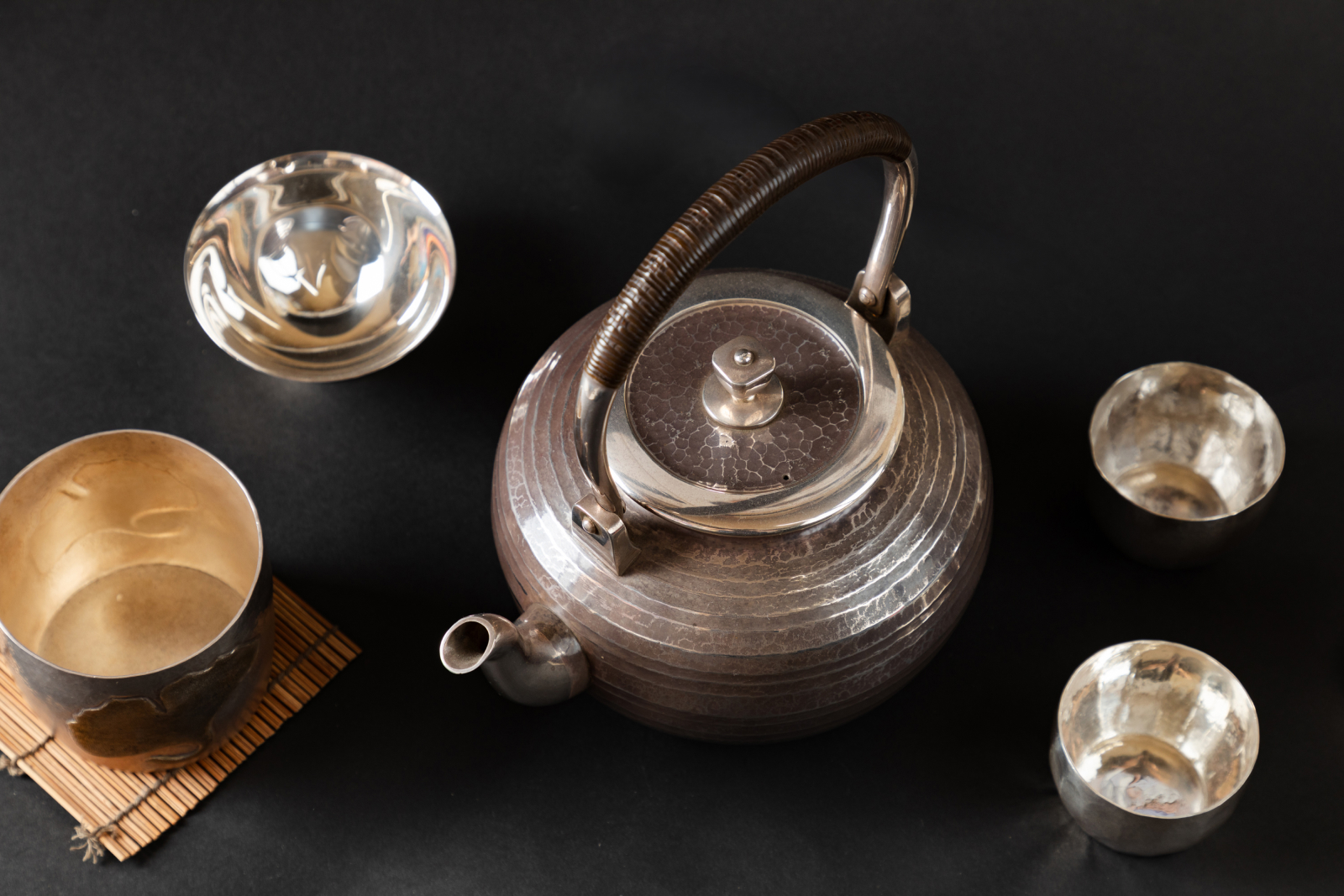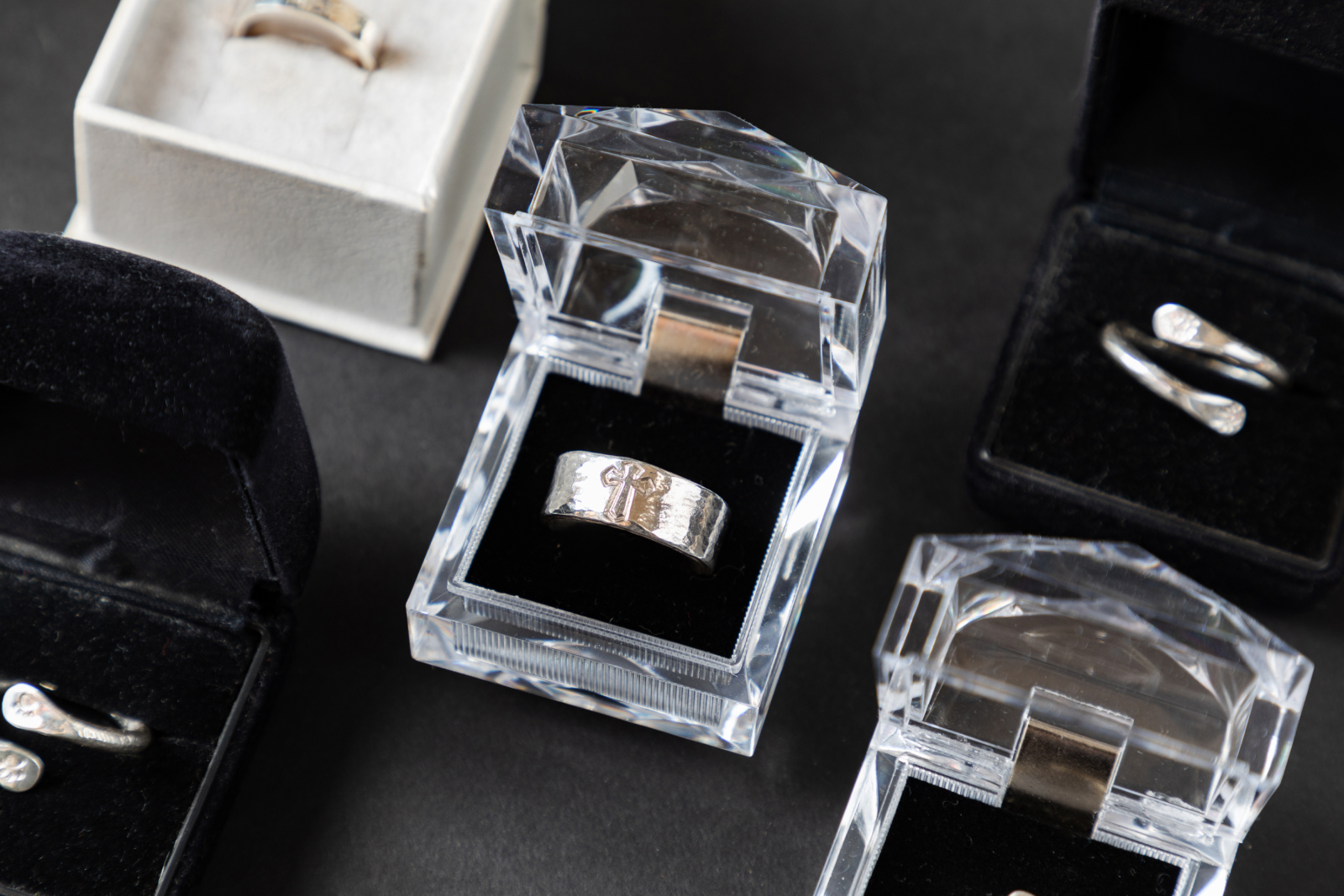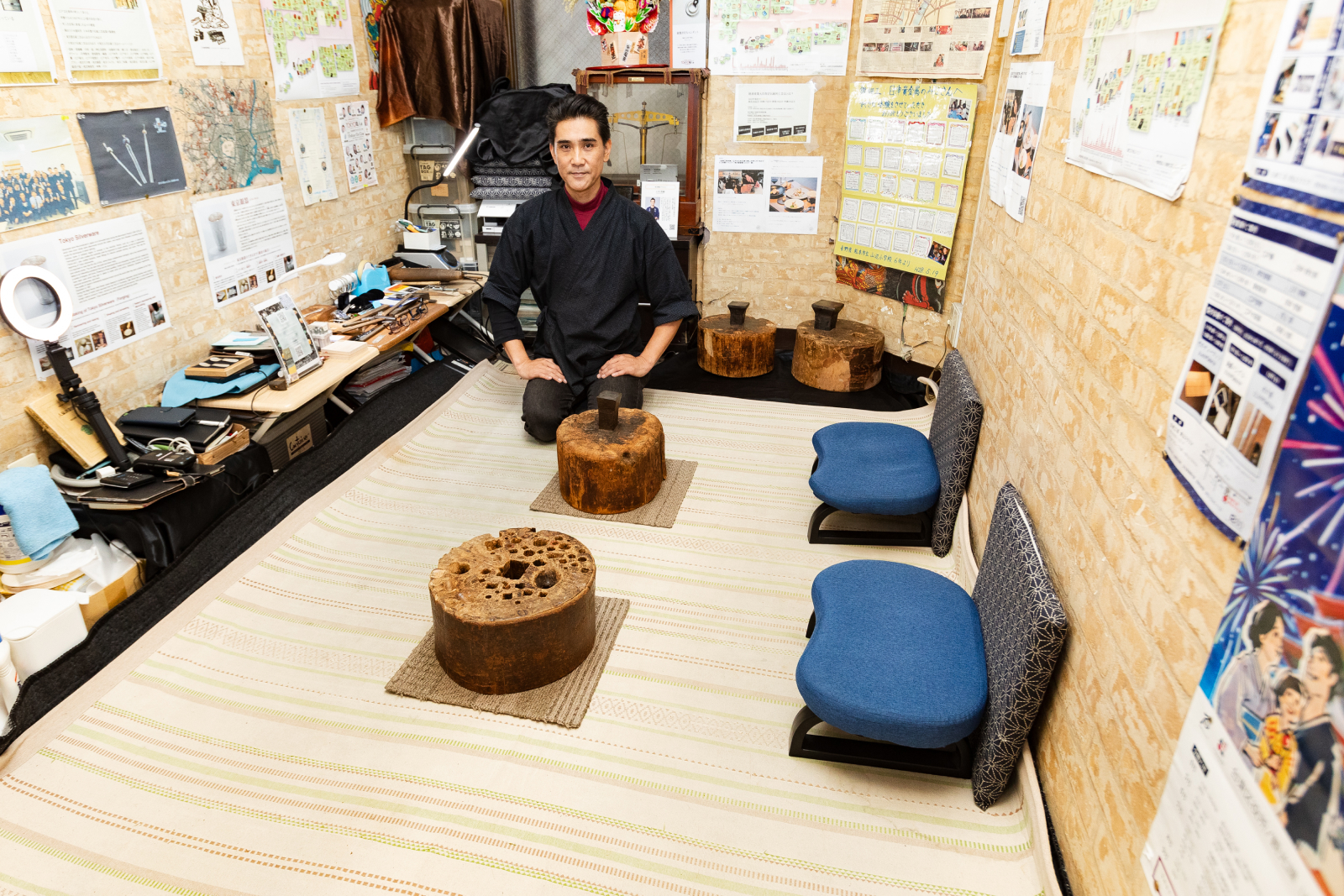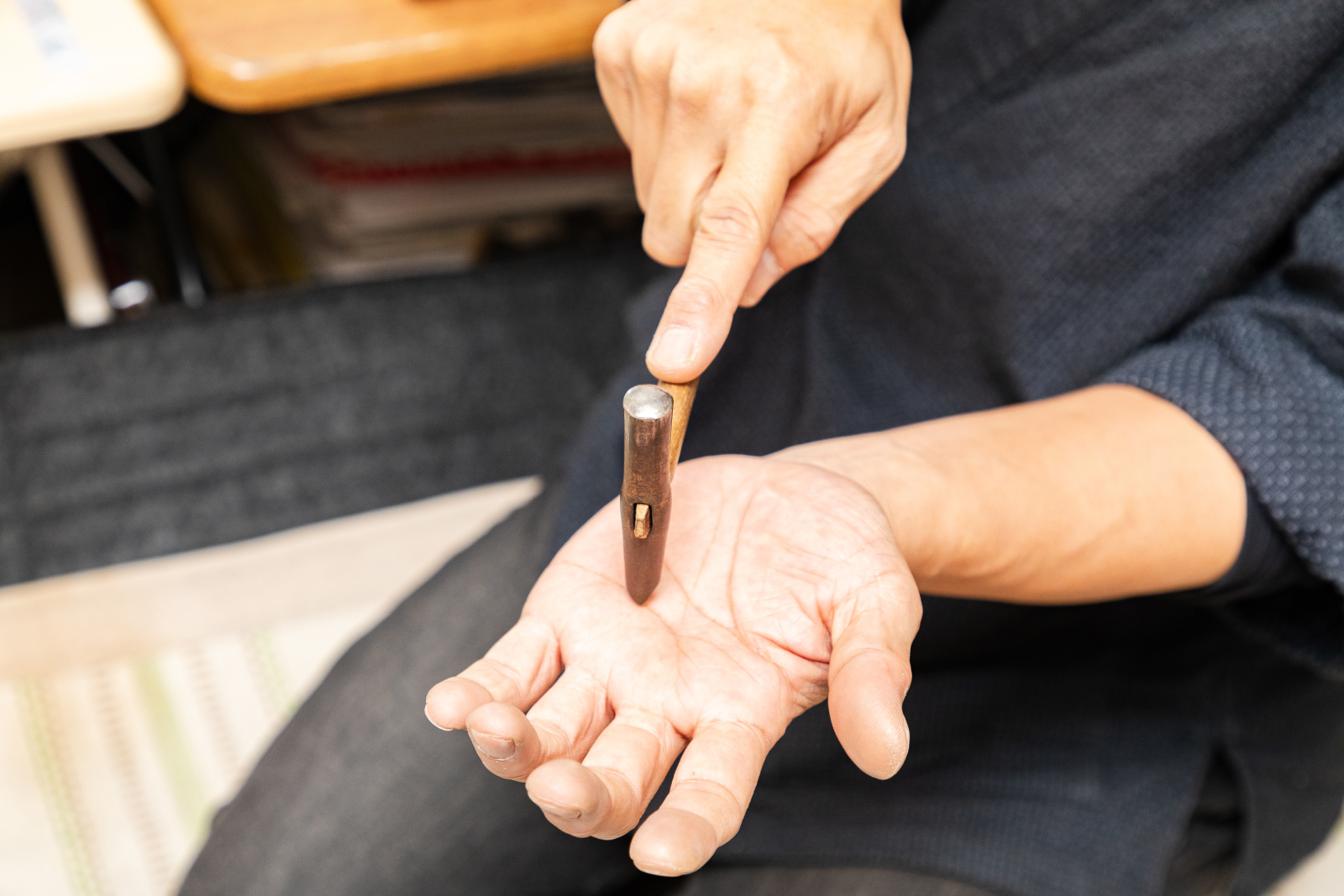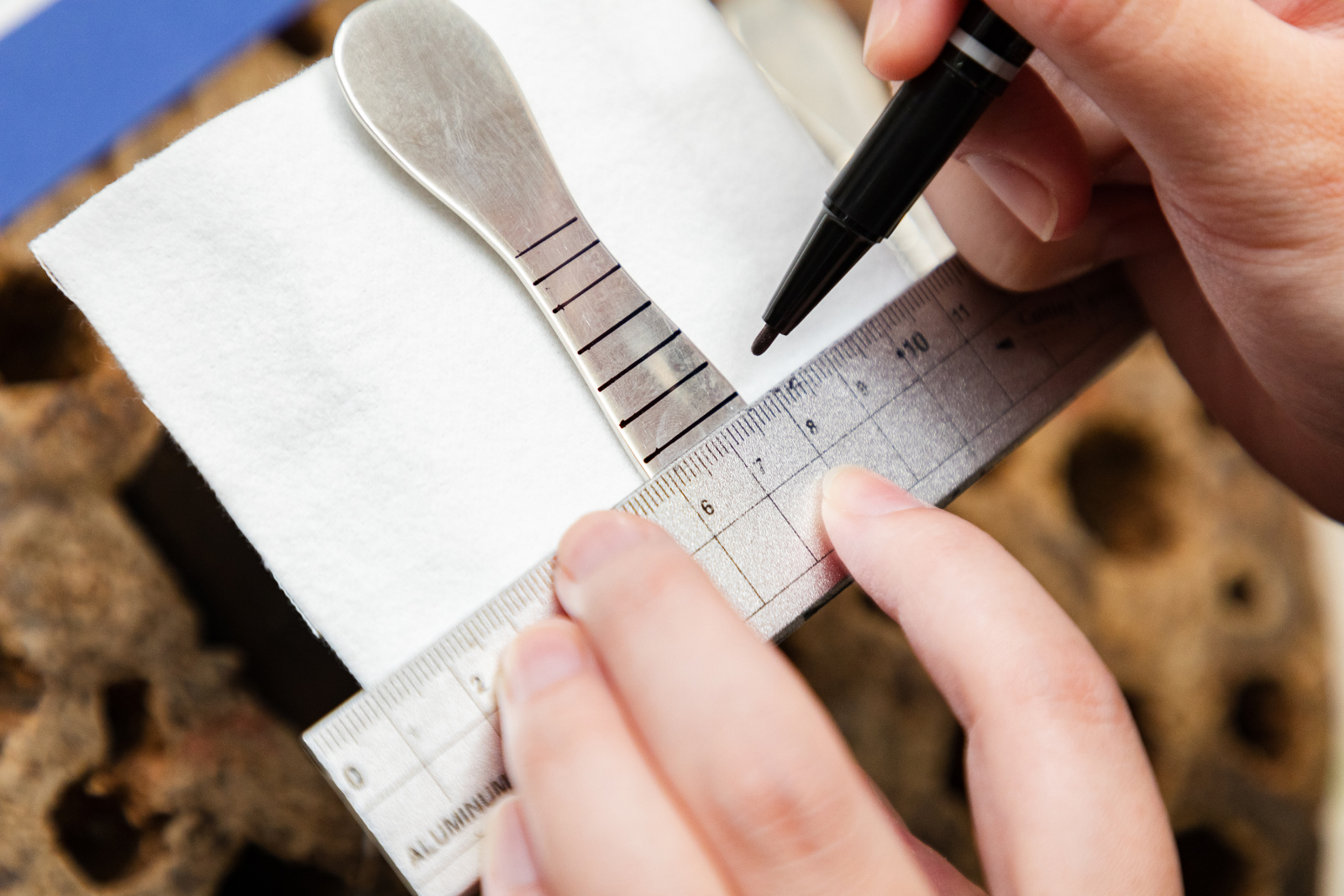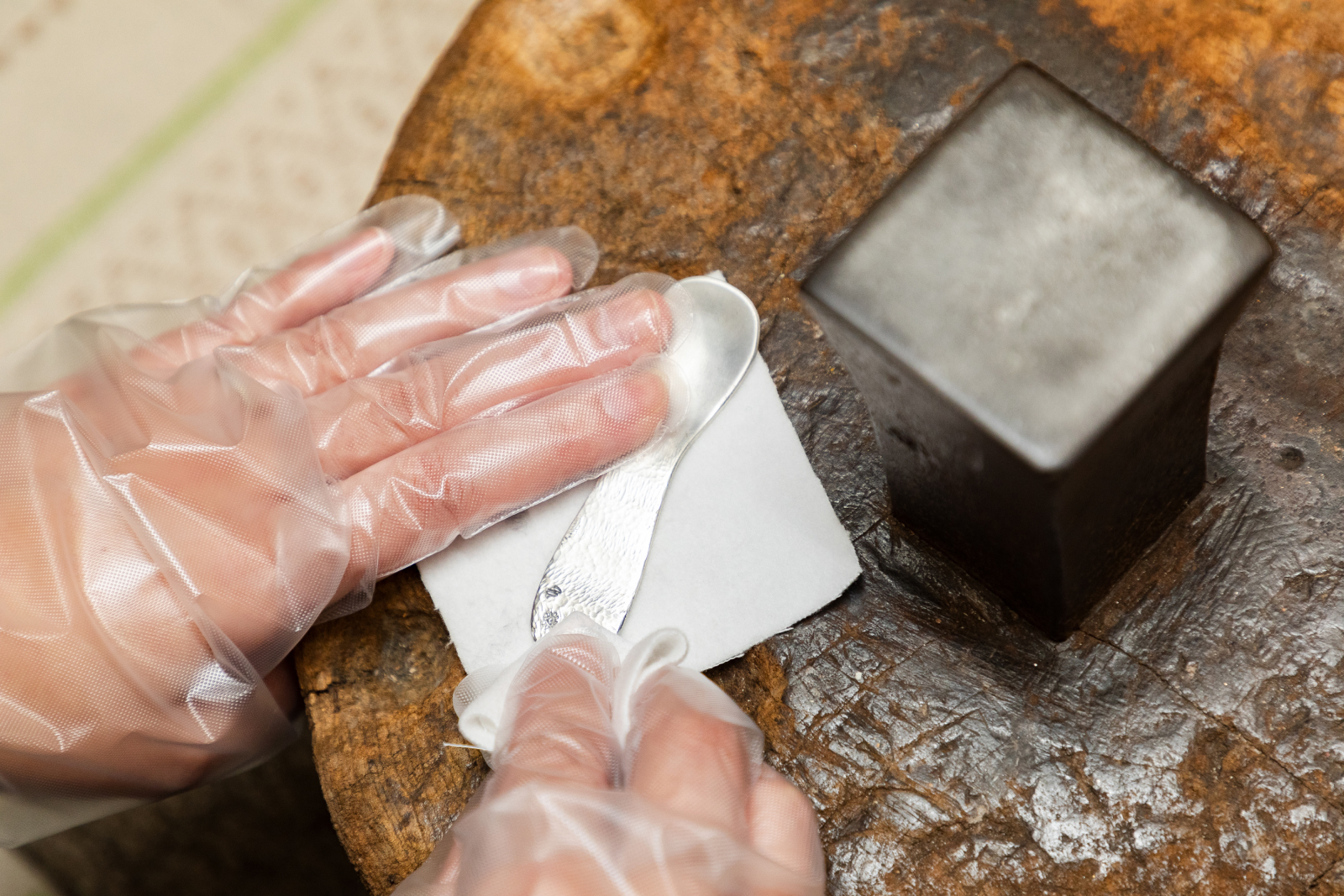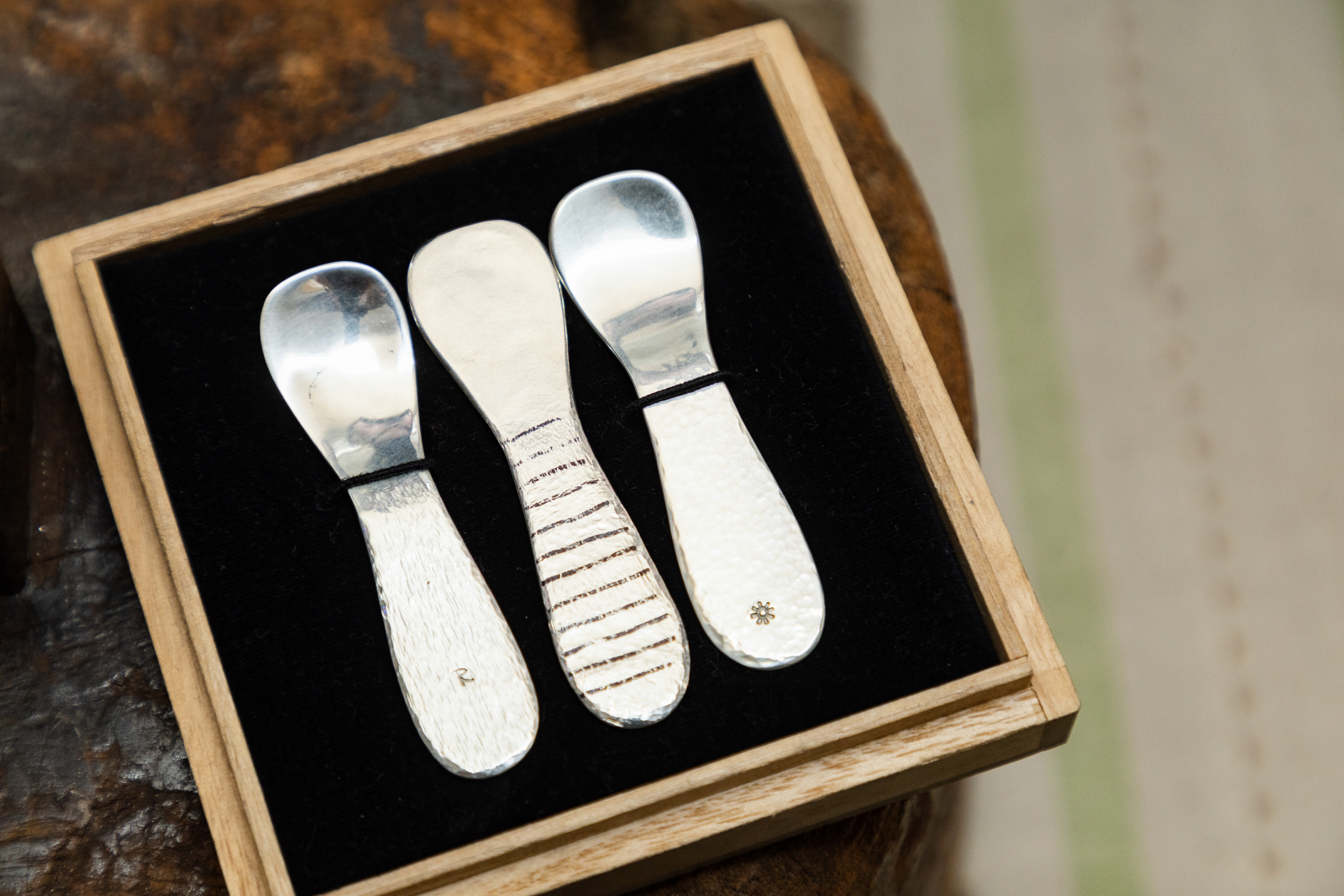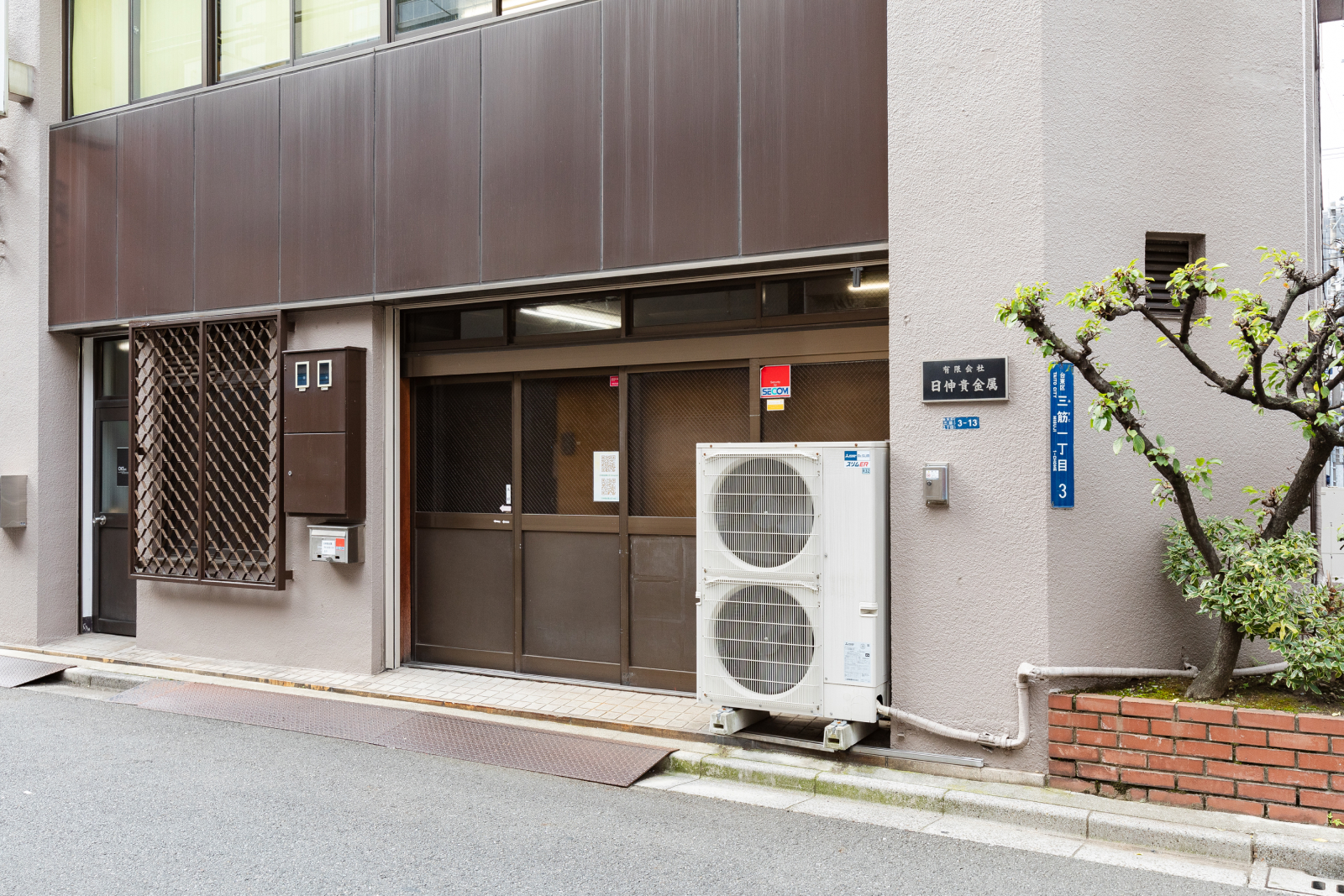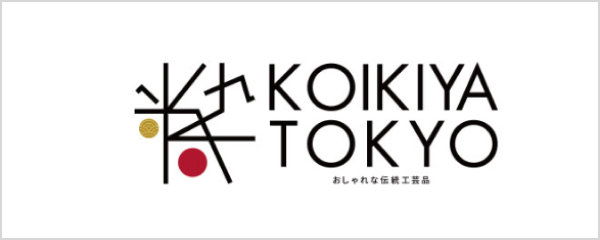Maintaining the traditions of the founder of Tokyo silversmithing
The forging techniques of Tokyo silversmithing are thought to have been originated by the Hirata family in the Edo period. Nisshin Kikinzoku was founded by Sohaku Kamikawa (the first Nisshin Kikinzoku head: Mr.Sosho Kamikawa), who was the first apprentice of Mr.Sodo Hirata, the ninth generational head of the Hirata family, which had been practicing for the nine generations. Currently, there are not many studios that maintain the Hirata family tradition left, and Nisshin Kikinzoku is one of the few studios that continues to use these rare forging techniques.
Using highly pure silver for a special gleam
Tokyo silversmithing is a Traditional Craft Product Designated by the Minister of Economy, Trade and Industry, and it is crafted from high quality silver called sterling silver, with purity of 92.5%. This alone would result in high quality silversmithing, however, most of Nisshin Kikinzoku products go even farther and use 99.9% silver. A higher quality silver has more than just a stronger luster. It also does not blacken with daily use, and is easy to maintain.
Thorough explanation by a tutor with 31 years of professional artisan experience
The activity starts with the viewing of a video about the history and production process of Tokyo silversmithing. Participants are invited to sit on the floor or in low chairs to experience this out of a desire to match the feel of the kind of production environment that existed in the Edo period. Just try to pretend you have transformed into an artisan in the Edo period.
After watching the video, it’s time to take a metal hammer in your hand and start practicing hammering out your design. An artisan will gently teach you the methods of holding and swinging the hammer, so no worries, this activity is just a fun for complete beginners as well.
Follow your heart, engrave your own pattern, and have fun!
After practicing, it’s time to put the guide lines which lead patterns on you spoon. The lines can be perfectly straight, or you can put them in at angles if you like.
After finishing lines, pick up one of the three types of metal hammers with differing designs, swing from a distance of about one to two centimeters, and form your pattern. Instead of inlaying the pattern mechanically, if you freely switch between the three types of metal hammers, light will cause a diffused reflection for a beautiful texture finish.
After putting in the pattern with a metal hammer, now you are ready to add an engraving by hand. Choose the type of engraving you like from our selections such as numbers, letters or symbols like a heart shape or paw print, and engrave it together with the artisan. Your engraving element is so important that supporting by an artisan would be a great help to finish it.
Put the exclusive finishing touches on your spoon, and create an unparallelled silver shining.
Next, put your spoon on a hollowed-out part of the work platform and pound with a wooden hammer to create the curved part of the spoon. All of the holes on the work platform are for creating products. It has taken over 60 years for the platform to reach its current shape.
Polishing with cream at the end will increase the original Tokyo silversmithing gleam. But your activity at Nisshin Kikinzoku is not over yet. Drying with a cloth, not performed in other regions, will give your ice cream spoon an even more lustrous finish. When you see original ice cream spoon in a wooden box, you will fall in love in the blink of an eye.
The design is your own, that's why you love it so much
At Nisshin Kikinzoku, we hope you to have fun experiencing crafting culture, and that is why we do not prepare any designs for you in advance. Freely expressing your own patterns without any of the stress of following predetermined templates will make you fall in love with your product all the more.
Because our studio is located in Taito ward, a place where craftmaking flourishes, the activity process was constructed out of a desire for anyone and everyone to enjoy experiencing traditional crafting. Whether you would like to dream about the beauty in your days together with your silver spoon, or may be imagining someone you would lijke to send a gift to, we invite you to join our wonderful activity of experiencing crafting.
Nisshin Kikinzoku Co., Ltd. was founded in 1964. It is a Tokyo Ginki silversmith studio that has maintained traditional techniques as a silver master, called Shirogane-Shi, from the late Edo period onward. Carrying on the techniques of the Hirata family, the originator of Tokyo silversmithing techniques, we strives to contribute to the community and promote Japanese traditional culture through handcrafting, too.


